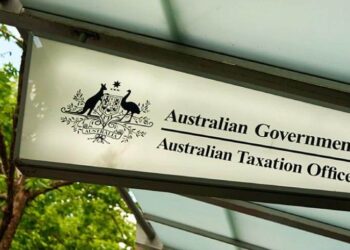James Creevy, legal services director for ACIS, said the regulator has identified issues in relation to outdated deeds, invalid trust distributions, and unclear succession mechanisms.
“The ATO has made it clear it is zeroing in on poorly maintained structures and vague trust deeds which may undermine the validity of historical or future distributions to beneficiaries,” Creevy said.
“In particular, the ATO is monitoring trusts that are subject to intergenerational wealth transfers which are becoming increasingly prominent as earlier generations of trusts are approaching their vesting date.”
Creevy continued due to the Tax Office’s enhanced data matching technology capabilities, along with amended tax returns, red flags are being raised more often in regard to these types of structures.
“What often comes to light are older deeds that were drafted with stricter and inflexible provisions, amendments and changes that were poorly drafted, and critically, historical distributions that were made to recipients outside the pool of eligible beneficiaries,” he said.
He warned that advisers with trust clients need to be diligent in reviewing trusts, which are no longer “set and forget” but now have to meet compliance obligations.
“As the ATO sharpens its focus, it’s not just the ultra-wealthy who need to be vigilant and ensure the trustee of a trust is complying with the trust deed, it’s everyone involved with administering a trust, advisers and trustees alike.”
Mitchell Harding, legal associate with ACIS, said the majority of the compliance issues with discretionary and family trust structures revolve around a misunderstanding of who the eligible beneficiaries of a trust are.
“Advisers are all too aware of the importance of ‘reading the deed’ when it comes to each client’s trust structures, however, time is finite and understandably, mistakes can be made when an assumption is made that the pool of eligible beneficiaries in one trust deed, is the same as in another trust deed,” Harding said.
“Even where two trust deeds are drafted by the same deed provider, the pool of beneficiaries may be customised, or one may be an earlier version of said trust deed and therefore could have a different pool of eligible beneficiaries than the later version.”
He added that it is dangerous to assume who the eligible beneficiaries are without properly identifying them in each particular trust deed, as if a distribution is made to an individual or entity that does not form part of the pool of eligible beneficiaries, the distribution would be invalid, resulting in adverse tax consequences.
“Another common scenario is where a Family Trust Election has been made which tightens the pool of beneficiaries who can receive trust distributions by limiting it to the individual specified, the test individual, in the election and their family group.”
“A distribution can technically be made to a person who does not fit within the meaning of test Individual or their ‘family group’, however, this would attract 47 per cent Family Trust Distribution Tax.”
It is these scenarios, he continued, that highlight how it is essential that advisers understand each of their clients’ trust deeds and to ensure yearly trust distributions are valid.
“When the ATO starts asking questions, most problems have been there for a while. It might start with something simple, an amended return, an unusual distribution, or a routine data match, but once they start, bigger issues surface,” Creevy added.
“What they find is rarely about outright evasion; it’s about outdated deeds, distributions to ineligible parties, and poor recordkeeping.
This puts advisers in a difficult position. They are suddenly playing catch-up, reviewing old documents and trying to explain decisions made years ago, sometimes by different advisers.”


